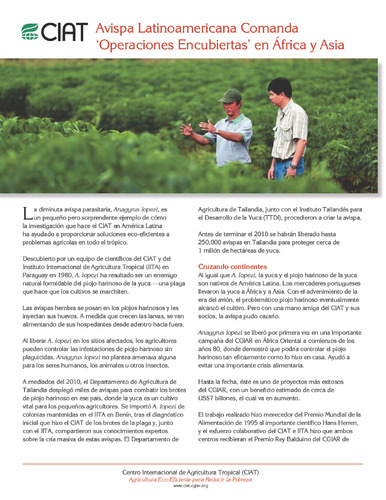Central America: fertile ground for Eco-Efficient agriculture = América central: Suelo fértil para la agricultura Eco-Eficiente
In striking contrast with many other parts of Latin America, which have urbanized quickly over the last several decades, Central America's population continues to rely heavily on agriculture and forests for livelihoods—a situation that presents both challenges and opportunities. About half of the people in this region live in poverty on small farms, coping with chronic malnutrition and other deprivations. Their efforts to escape from poverty are hindered by rampant degradation of soils, water, and forests, affecting about 75% of the total land area. Climate change will undoubtedly intensify the pressure on natural resources in the coming decades, making it more difficult than ever to raise agricultural productivity. Despite these handicaps, Central America has ample scope for fostering economic development through sustainable agricultural growth. Strong investment in the improvement of staple crop production promises to yield sizable payoffs, primarily through lower, more stable food prices, translating into higher rural incomes. Efforts to promote the development of small-scale rural enterprises also show much potential for reducing rural poverty and hunger, and so do new approaches for improving natural resource management through gender-responsive participatory research that addresses the divergent needs of men and women.

